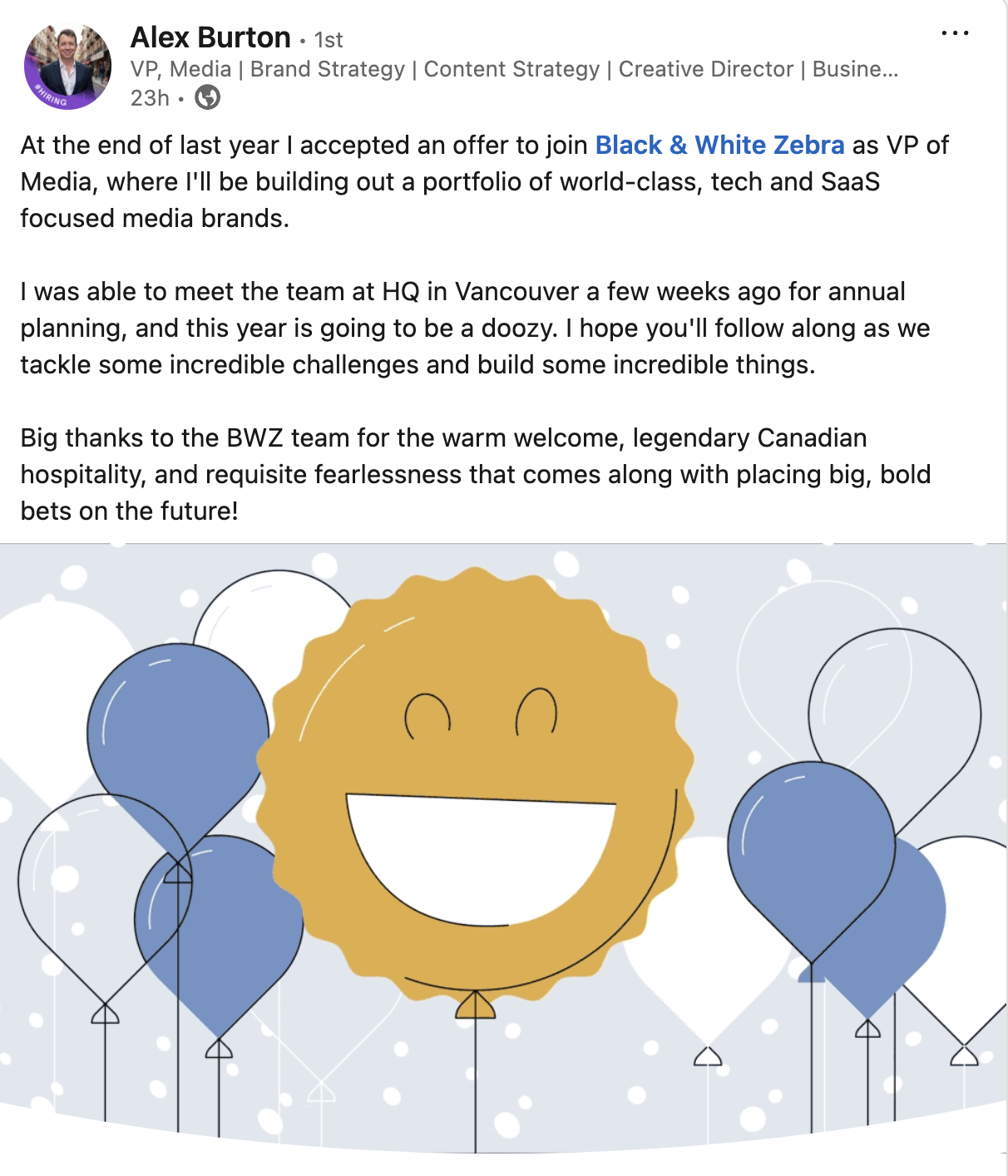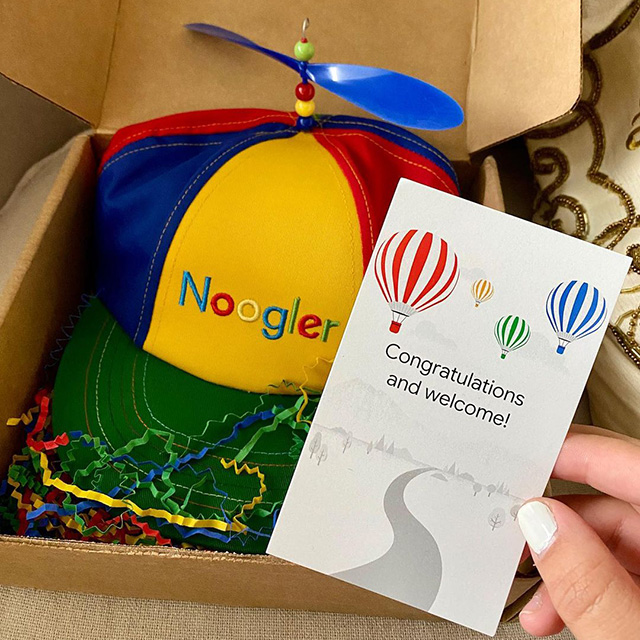Onboarding is a crucial but often overlooked stage in the employee lifecycle. According to Gallup research, only ~12% employees think their org does a great job of onboarding.
You can do better!
Here I cover why onboarding is so important, what the different stages are, and some experts’ best practices for developing an effective onboarding process.
What Is Onboarding?
Onboarding is the process of integrating a new employee into an organization. It involves providing them with the necessary time, information, training, and resources to understand the business, their role within it, and form bonds with their colleagues.
Why Is Onboarding Important?
Onboarding is important because it helps new team members get off to the best possible start. Effective onboarding can:
Increase retention
Proper onboarding reduces turnover by helping new hires feel welcomed and supported.
According to research by the Brandon Hall Group, businesses with a strong onboarding process can improve new hire retention by 82%.
Let’s face it, if you turn up on the first day and everyone seems surprised by your arrival, alarm bells start ringing.
Boost productivity
Effective onboarding results in new workers learning their roles and responsibilities better and faster and therefore becoming productive workers in less time.
The same Brandon Hall Group study found that effective onboarding can boost new hire productivity by over 70%.
Contribute to a stronger employer brand
When employees feel welcomed, supported, and set up for success, they’re more to advocate for your company on socials and leave positive reviews on sites like Glassdoor.

How Long Does Onboarding Take?
Onboarding actually takes around 90 days for most roles but it can extend up to a year for more complex roles or senior positions.
“Many organizations mistakenly treat onboarding as a one-time event rather than an ongoing process," says people ops consultant, Rita Wittek, “They focus heavily on paperwork and logistical setup, neglecting the critical human elements like building connections and embedding new hires into the culture.”
The duration depends on factors like the complexity of the job, the size of the organization, and the level of support provided.
A well-structured 30 60 90 day onboarding program usually includes a preboarding phase, initial orientation (first week) followed by ongoing support, training, and check-ins throughout the first few months.
Typical Onboarding Activities
There’s quite a lot to organize for a successful onboarding. Here’s an overview of the different onboarding activities at each stage of the onboarding process.
Pre-boarding
- Sending welcome emails or packages.
- Providing necessary paperwork (contracts, tax forms, etc.).
- Sharing a schedule of the first week.
- Setting up accounts for email, software, and systems.
IT Setup and training
- Setting up workstations, software, and necessary equipment.
- Introductory training on internal tools, software, and systems.
- Cybersecurity and data privacy training.
Orientation
- Company overview: Mission, vision, and values.
- Introduction to company policies (HR, security, etc.).
- Office tour (or virtual tour for remote workers).
- Meet-and-greet with team members or key colleagues.
Compliance and legal raining
- Safety training (for specific industries).
- Anti-harassment, diversity, and inclusion policies.
- Country-specific or industry-specific legal compliance training.
Job-specific training
- Role-specific processes and expectations.
- Reviewing responsibilities and goals for the position.
- Mentorship or pairing with a more experienced colleague for guidance.
Setting expectations and goals
- Initial meeting with a manager to review short-term and long-term objectives.
- Establishing key performance indicators (KPIs) for success in the role.
Social integration
- Team lunch or virtual coffee meeting.
- Introductory social events to help the new hire integrate into the culture.
- Introduction to employee resource groups or internal networks.
Check-ins and feedback
- Regular check-ins with the manager or HR during the first few weeks or months.
- Gathering feedback to help optimize onboarding.
- Reviewing the new hire’s progress and addressing any challenges.
Onboarding Process For New Employees
Onboarding just lasts for the first day or week, right? Wrong!
“Onboarding does not end at the end of the first day of work," says Alice Ferretti of HumansR. “It usually takes up to 3 months for new hires to be fully onboarded with the company, this includes being fully enrolled in perks and benefits, establishing relationships with the people they work with on a regular basis and, finally, being familiar with their role and duties.
This means that the initial support given to a new hire, while it can be tamed down, should still be there, checking in regularly with the new hire can make the difference.”
While no two onboardings will look the same, and I’ll provide a pretty unique example later, most organizations find it useful to split onboarding into phases to help develop activities and measure progress at each stage.
Preboarding
Preboarding is the phase between a new hire's acceptance of a job offer and their first day at work. It helps new employees feel welcomed and prepared, easing their transition into the company.
Common preboarding tasks include:
- Paperwork: Sending and collecting new hire paperwork such as contracts, tax forms, and policy acknowledgments.
- Welcome communication: Sending a welcome email or package with company information, an introduction to the team, and first-day details.
- Tech setup: Preparing necessary tools like a work computer, email account, software access, and workspace.
- Company resources: Sharing materials like an employee handbook, company policies, and organizational charts.
- Introductions: Providing information about team members, managers, and key contacts to help the new hire get acquainted with their future colleagues.
Orientation
Orientation is the initial phase of onboarding that occurs on a new hire’s first day and extends through the first week. It focuses on introducing them to the company, its culture, and basic operational procedures.
Common orientation tasks include:
- Company overview: Presenting the company’s history, mission, values, and goals to help the new hire understand the organization's identity and purpose.
- Introductions: Introducing the new hire to team members, managers, and key personnel, fostering a sense of belonging.
- Policy review: Going over company policies, procedures, and code of conduct, including topics like dress code, work hours, and workplace safety.
- Office tour: Providing a tour of the workplace (or virtual tour for remote employees) to familiarize the new hire with facilities, meeting rooms, and key areas.
- Benefits and compensation: Explaining employee benefits, compensation structure, and how to access related resources.
- Job role overview: Reviewing the new hire’s job responsibilities, team structure, and performance expectations.
- Training schedule: Outlining initial training sessions, resources, and tools they will use in their role.
0-30 days
During the 0-30 days mark of onboarding, the focus is on helping the new hire settle into their role, build relationships, and start contributing to the team. This period is crucial for setting the foundation for their success.
Key activities during this phase include:
- Job-specific training: Providing detailed training related to the new hire's specific role, including tools, software, and processes they’ll need to use.
- Goal setting: Discussing short-term goals and expectations with the new hire, often with their manager, to give them a clear focus for their first few months.
- Regular check-ins: Scheduling frequent check-ins with managers or HR to address questions, offer feedback, and provide support as they adjust.
- Assigning a mentor/buddy: Pairing the new hire with a peer or mentor to provide guidance, answer questions, and help them acclimate to the company culture.
- Team integration: Encouraging participation in team meetings, projects, and informal gatherings to help the new hire build relationships and understand team dynamics.
- Feedback and adjustments: Offering feedback on performance and making necessary adjustments to their training or workload to support their progress.
This phase aims to build confidence, clarify expectations, and foster a sense of belonging within the team.
30-60 days
During the 30-60 days period of onboarding, the focus shifts to deepening the new hire’s understanding of their role, increasing their contributions, and further integrating them into the team and company culture.
Key activities during this phase include:
- Advanced role training: Providing more in-depth, role-specific training to enhance the new hire’s skills and knowledge. This might include complex tasks, tools, or systems relevant to their position.
- Expanded responsibilities: Gradually assigning more challenging tasks or projects to help the new hire build confidence and showcase their abilities.
- Ongoing check-Ins: Continuing regular check-ins with managers to discuss progress, address challenges, and provide constructive feedback. These meetings help ensure the new hire feels supported and valued.
- Networking: Encouraging the new hire to meet with colleagues from other departments to understand the company’s broader operations and build a professional network.
- Goal review and adjustment: Revisiting initial goals and adjusting them based on the new hire's progress, aligning with both individual and team objectives.
- Cultural integration: Encouraging participation in company events, team-building activities, or social gatherings to strengthen their connection to the company's culture.
- Soliciting feedback: Asking the new hire for feedback on their onboarding experience so far to identify areas for improvement in the process.
This period is key to fostering relationships, solidifying their understanding of their role, and ensuring they know where to find information.
60-90 days
During the 60-90 days mark of onboarding, the focus is on reinforcing the new hire's independence, ensuring they are fully integrated into their role, and setting the stage for long-term success within the company.
Key activities during this phase include:
- Increased autonomy: Gradually allowing the new hire to take ownership of their projects and tasks, demonstrating trust in their abilities and decision-making skills.
- Performance evaluation: Conducting a formal performance review to assess the new hire’s progress, strengths, and areas for improvement. This review helps align expectations and sets a benchmark for future performance.
- Ongoing feedback: Providing constructive, actionable feedback to help the new hire continue developing their skills and adapt to any challenges they've encountered.
- Career development discussions: Starting conversations about the new hire's career goals and potential growth opportunities within the company to show a path forward.
- Networking expansion: Encouraging further networking with cross-functional teams, stakeholders, and other departments to deepen their understanding of the company’s operations and their role within the larger context.
- Skill enhancement: Identifying additional training or development opportunities based on their performance and future career aspirations.
- Project involvement: Involving the new hire in more complex or collaborative projects, highlighting their integration and readiness to contribute at a higher level.
This phase solidifies the new hire's role in the company, supports their professional growth, and ensures they feel fully engaged and prepared for long-term success.
90+ days
After the first 90, the focus shifts to long-term integration, continuous development, and performance management. During this period:
- Transition to regular performance reviews: The new hire moves from frequent check-ins to the company’s standard performance review cycle, focusing on goal setting, ongoing feedback, and career development discussions.
- Skill development and training: Continued training opportunities are provided to enhance the new hire's skills, aligning them with career growth and long-term company objectives.
- Deeper integration: The new hire fully participates in team projects, cross-departmental collaborations, and company initiatives, solidifying their role and contributions within the organization.
9 Employee Onboarding Best Practices
We spoke to some HR experts to get some onboarding best practices to help ensure an effective, efficient process:
1. Start before day one (pre-boarding)
“Organizations underestimate the importance of pre-boarding—the period before a new hire's first day,” says Wittek. “Providing resources, introductions, and access to tools beforehand can significantly reduce first-day anxiety and help new hires feel prepared and confident. If the hire is local you could also invite them to pop over for lunch or Friday drinks prior to their start date, that's always been a welcome invitation wherever I've worked.”
And, if hiring international workers, the preboarding phase becomes even more important.
“One story that comes to mind is when we onboarded a new developer who had just moved to a different country to join us,” remembers Tetiana Burda, CAO at Syndicode. “In addition to the usual setup, we helped them figure out housing, transport, and fun spots to explore on weekends. That extra effort paid off in their happiness and how quickly they adapted to our work culture. Moments like these remind me why onboarding matters so much.”
2. Create a semi-standardized plan
Have a semi-standardized 30, 60, and 90 plan outlining job-specific tasks, training, goals, and key meetings at each stage of the onboarding workflow.
There are certain activities e.g. presentations that all new starters will have to complete, but obviously some that will be role specific.
3. Automate and streamline administrative tasks
We’ve got tools to automate repetitive tasks like sending out welcome emails, organizing training modules, or signing contracts digitally before the first day,” says Burda, “People often underestimate how much friction you can remove with straightforward automation. It frees up HR to focus on what matters: the human connection.”
Leverage HR or onboarding software to streamline repetitive tasks like paperwork, benefits enrollment, and training.
4. Let new employees share about themselves
Everyone wants to be known and valued, says Reid Walsh, Chief Human Resources Officer at NEOGOV. “Facilitate this by giving new hires an opportunity to share about themselves:
- Create an onboarding form for new employees to answer questions about their work preferences (i.e. communication via email, phone, in-person, or chat tool), personality traits, favorite things (coffee order, snacks, movies, etc.), etc.
- Share new employee spotlights with the team each week via email, meetings, or chat tools.
- Conduct a team-building exercise where the entire department completes a personality test like StrengthsFinder or the Enneagram and shares their results.
- Have new hires (and their team) create and present a slide deck with bullet points and photos about their interests, hobbies, family, and history.”
5. Assign a new hire office buddy
Pairing new employees with a seasoned coworker, mentor, or buddy can make them feel welcomed from day one,” says Walsh, “You can even connect new hires with their buddy in advance so they see a familiar face on day one.
An office buddy can show them around the office and introduce them to other team members the first few days, but the role can extend for multiple weeks. Having icebreaker questions or conversation starters ready can help break the ice during these introductions.
Buddies can offer valuable support in a remote setting too, i.e. weekly calls to answer questions, explaining other employees’ roles, or using screen-sharing to showcase important tools.”
6. Share tasks
Creating the onboarding plan should be a team effort between departments such as HR, IT, and finance, and managers and sometimes senior execs.
Likewise, its implementation should also be a team effort, and there’s an opportunity to help develop existing team members as well:
“There are many individual contributors looking for opportunities to lead or manage projects, and onboarding new team members is a great opportunity to delegate to someone who is not yet a manager or leader but wants to be," says HR expert, Maggie Michaels DeCan, “This gives them an opportunity to show that they can take on more and lead an important responsibility while taking an important but often overlooked task off a leader's plate.
This collaborative approach is especially important when developing global onboarding strategies that need to account for different time zones, cultural considerations, and local regulations.
7. Regular check ins
Research from Microsoft found that new hires are 3.5 times more likely to report satisfaction if their managers play an active role in their onboarding, a finding DeCan agrees with:
“In the end, there is no substitute for the hiring manager putting a note in their calendar to drop by after the first day, then check in and again after the first week, month and then regularly to check in and see how things are going and demonstrate that they care about their transition.”
8. Start career development conversations
According to Sasha Robinson, VP of People at Trainual, onboarding is the perfect time to lock in employee engagement by beginning career development conversations:
“High-potential employees can be identified early by exposing them to leadership and showcasing growth opportunities. Scheduling 1:1s with team leads during onboarding gives new hires a chance to connect with the best and brightest on your team and envision the pathways available to them. Coupling this with clear documentation on career ladders, growth trajectories, and leadership expectations shows them where they can go and inspires them to aim high.”
9. Use data to hone the process
Lastly, using the tools available, it’s pretty straightforward to track metrics like time-to-productivity, task completion rates, and worker feedback to help identify bottlenecks and areas for improvement, enabling data-driven decisions to refine the process.
- Time to productivity: Measures how long it takes a new hire to reach full productivity. Track this by setting milestones for key tasks and monitoring when new employees start performing their job independently.
- New hire retention rate: The percentage of new hires who successfully pass onboarding (of course, this is also impacted by how good the recruitment process is too).
- New hire satisfaction: Assesses the new hire's onboarding experience through onboarding surveys or feedback forms. Use regular pulse surveys to gather insights on their experience, engagement, and any challenges faced.
- Completion rate of onboarding tasks: Tracks whether new hires complete assigned onboarding activities, such as training modules and paperwork.
Time to complete onboarding: Measures how long the entire onboarding process takes. Record the time from the new hire’s start date to the completion of their last onboarding activity to track process efficiency.
Onboarding Tools
While onboarding is very much about people, there are a number of tools that can help automate onboarding and make the process more enjoyable and effective.
- Onboarding software: Specialized onboarding tools that help develop a structured onboarding process with personalized checklists, task automation, and feedback mechanisms.
- HR workflow solution: Automate everything from sending personalized welcome emails to tracking task completion and ensuring all compliance documents are submitted.
- HRMS/HRIS: These platforms offer comprehensive onboarding modules that handle documentation, benefits enrollment, and compliance while tracking the progress of new hires. For more info, see our picks of the best HRMS and best HRIS.
- Document management: Document management systems help streamline paperwork, allowing new hires to electronically sign and submit contracts, policies, and other necessary documents.
- Learning management systems: These systems help facilitate job-specific training and skill development, allowing new hires to access educational content, complete courses, develop personalized plans, and track progress.
- Employee training software: Training management software include modules to create, organize and deliver training content and monitor which employees have reviewed the material and when.
- Survey tools: Help gather feedback on the onboarding experience and monitor new hire engagement to identify areas for improvement. Check out our pick of the best employee survey tools.
- Benefits administration and payroll software: Either combined or standalone payroll software and benefits management systems allow new hires to input personal information, select benefits, and set up payroll preferences. These tools automate onboarding compliance, streamline benefits enrollment, and offer self-service portals for easy access to compensation and benefits details.
- Checklist template: People Managing People's new hire checklist template.
And if you're a bit overwhelmed with options, we can give you advice on how to select onboarding software too.
Interesting Onboarding Case Study: Zappos
Zappos is an online clothing retailer with an interesting onboarding process that focuses on values and culture, in particular customer service.
In practice, this means that ALL new starters, even engineers, have to spend the first 4 weeks on the customer loyalty team answering customer queries.
This is quite an incredible investment when you think about it, but Zappos feel it’s worth it so everyone at the organization understands their customers and how their dedication to customer service is the core of the business.
The stint in customer service is buttressed by sessions on company history, customer philosophy, culture, processes, and Q&As with seniors.
They also gamify and sprinkle in some fun with scavenger hunts, egg drops, and happy hours (all of which are encouraged to be shared on social media to help boost the employer brand).
After this period, to weed out any doubters, Zappos offers the new hire $4000 to quit—a test of their commitment to the vision and culture.
If they continue, there’s a graduation party and they go into more training in their respective teams.
The Zappos onboarding process represents the org’s values of customer service and fun, ensuring new hires are properly onboarded at the company and team levels.
The Onboarding Romance
If you think about it, onboarding is very much the honeymoon period in the employee relationship.
You’ve decided you like each other enough to give things a try and you’re excited to get to know each other better.
Onboarding is a reflection of your culture, so don’t be shy! There are any number of ways this can come out in your process.
For example, Google still sends new starters, called ‘Nooglers’, the famous Noogler hat.

Your onboarding process will evolve over time based on your success metrics and new starter feedback.
It pays to have a structure of sorts with standard elements but then leave room for adaptation depending on role.
You can use our 30 60 90 day template to help you start designing yours.
30-60-90-day onboarding template

Get our Onboarding template!
Subscribe To The People Managing People Newsletter
For more on onboarding and other talent management strategies, subscribe to our newsletter for HR and business leaders sharing knowledge and best practices to help you grow in your career and make greater impact in your org.





